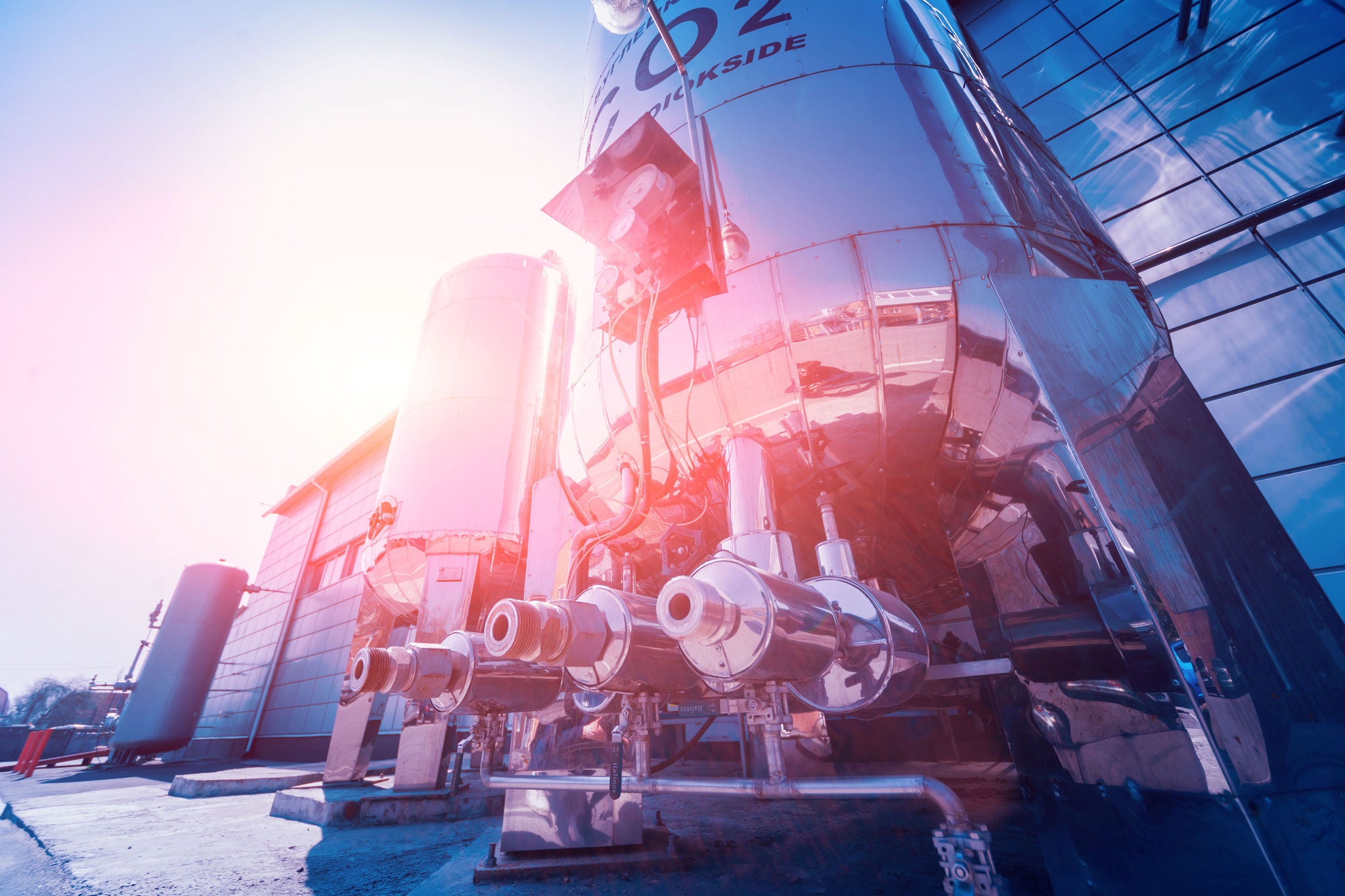EY refers to the global organization, and may refer to one or more, of the member firms of Ernst & Young Global Limited, each of which is a separate legal entity. Ernst & Young Global Limited, a UK company limited by guarantee, does not provide services to clients.

A new law is likely to jump-start a key technology that can benefit many industries and the world.
In brief
- Among those that could gain the most from the Inflation Reduction Act is likely to be the technology known as carbon capture use and sequestration (CCUS).
- CCUS is critical to achieving net-zero emissions because of its value in capturing carbon from vital sectors that are challenging themselves to decarbonize.
- CCUS can play an important role in the energy transition by enabling the use of available resources while significantly reducing emissions.
The recently signed Inflation Reduction Act of 2022 represents the largest climate-related investment in US history, with close to $370 billion dedicated to energy transition and renewable energy initiatives.
One of the major beneficiaries of the act is likely to be the technology known as carbon capture, utilization and storage, or carbon capture, utilization and sequestration, (CCUS), a proven method of reducing greenhouse gas emissions from energy-intensive manufacturing facilities, industrial facilities and power plants.
CCUS typically involves capturing carbon oxides from an emissions stream prior to its release into the atmosphere and either sequestering the captured oxides in permanent geological storage, using the captured oxides in enhanced oil or natural gas production (and sequestering the oxides), or using the oxides in approved commercial or chemical applications. It can also be achieved by direct air capture – taking CO2 directly from the ambient air (and then similarly sequestering or using the captured oxides).
While carbon capture technology itself has been around for decades, and although a US federal income tax credit for CCUS has been in place since 2008, the costs involved have limited the market for widespread US CCUS application.
Now, the improved incentives provided by the Inflation Reduction Act provide an immediate boost in the economic viability of CCUS. The new law increases the US federal income tax credit under IRC Section 45Q (the Section 45Q credit) available for US CCUS projects, provides for a later beginning of construction deadline of before January 1, 2033, lowers the annual capture requirements, and introduces a limited, 5-year direct pay provision (allowing for an alternative monetization option for companies) and provisions related to the transfer of CCUS tax credits.
Chapter 1
How the new act benefits CCUS projects
Carbon capture is much more attractive for carbon-intensive companies and profit-focused investors.
Carbon capture requires significant investment in equipment because separating the carbon oxides from the emissions stream, especially in certain applications, can be challenging. Transportation of captured oxides can also be costly, requiring a pipeline and related infrastructure from the plant site to a secure underground geological structure for injection (or other applicable use). Finally, the regulatory approval process for sequestering captured oxides can be time consuming and involved.
Because of those complexities and costs, only 16 carbon capture, utilization and storage facilities exist in North America today, despite the implementation of the CCUS-focused tax credit in 2008. The majority are found at natural gas processing plants, where separation is relatively simple and there are commercial uses for captured CO2 as well as nearby structures for injection.
The Inflation Reduction Act minimizes many of the barriers to CCUS investment while further incentivizing CCUS projects. Under the new law, the Section 45Q credit is subject to a two-tiered credit regime, with a lower base rate and a higher bonus rate (if the prevailing wage and apprenticeship requirements are met). Specifically, for point source capture projects (where capture equipment is installed directly at the industrial or manufacturing facility), the top potential rate is now $85 per metric ton of qualified carbon oxides captured and sequestered (up from $50 per metric ton), and, for direct air capture projects, the top potential rate is now $180 per metric ton of qualified carbon oxides captured and sequestered (up from $35 per metric ton). Additionally, the annual carbon capture thresholds have been materially lowered (i.e., to 12,500 metric tons per year for many point source capture projects, to 1,000 metric tons per year for direct air capture projects, and to 18,750 metric tons per year for projects related to electricity generating facilities).
Importantly, under the new law, companies can elect a limited, 5-year direct pay option for Section 45Q tax credits that the companies may not have otherwise been able to use, or the companies can sell the Section 45Q tax credits (one time, for cash, per facility, per year). Certain of these changes take effect immediately (such as the lowered capture requirements and the extended beginning of construction dates); whereas certain changes take effect beginning January 1, 2023 (such as the increased credit rates and the potential ability to elect the direct pay or transferability provisions).
The changes are designed to encourage investments related to making certain manufacturing and industrial process operate in cleaner, more efficient manners, by making the addition of carbon capture equipment and related infrastructure more economically viable.
Plus, many CCUS projects that qualify for federal tax credits under Section 45Q of the Internal Revenue Code can also earn state-level tax and economic incentives, making them even more viable.
These changes mean that a much broader range of CCUS projects, across multiple industries, can be economically feasible. We expect that investors and developers alike will increasingly embrace CCUS and that projects will be fast-tracked across the US as companies strive to achieve net-zero goals.
Chapter 2
Getting started in carbon capture, utilization and storage
Several key questions will shape the opportunity
CCUS developments are highly integrated projects that can be structured in a wide variety of ways – from large, full-cycle investments to specific, bespoke investments in particular aspects of the value chain – depending on the objectives of the stakeholders and overall project economics.
Companies interested in CCUS solutions should begin by defining where in the value chain they can participate – carbon capture, transport, sequestration or a combination thereof – and evaluating the risk and economic profile for each.
Start by answering these key questions:
- What is the potential economic universe throughout the CCUS value chain (from the emitter to the owner of the carbon capture equipment, through transportation and sequestration (or other qualified use)? Depending on the type of CCUS installation, it may be that there is a finite, definable pool of economics, and understanding that pool of economics is critical to evaluate where (and at what parts) of the CCUS value chain you want to participate.
- Can you finance the project internally or will you need outside capital? During the feasibility and design stages, it is critical to align capital preferences and requirements with project objectives. Companies have a variety of sources for capital, including traditional bank and project finance markets, tax equity providers and alternative-credit-related sources.
- What are the costs (and the timing of such costs) of your CCUS project (from the cost of the capture equipment to the transportation costs, and the costs (and intricacies) of permanent sequestration (or otherwise qualified use)? Cost variables will depend on the emission source, the distance between capture and sequestration (or qualified use), the timelines and regulatory requirements for permanent sequestration (or otherwise qualified use). Further, as the Section 45Q credit is a 12-year US Federal income tax credit, understanding the costs before, during and after the credit term is essential.
- Can your project meet the requirements of Section 45Q (from the annual capture requirements to the ultimate sequestration or use of the captured oxides)?How can you best monetize your investment? From tax equity to direct pay to the ability to sell the Section 45Q tax credit, there is no one-size-fits all answer as to the best monetization option. Further, financing and timing of capital requirements may significantly impact the ultimate monetization plans.
In addition to new carbon capture facilities and equipment (which could include, as an example, blue hydrogen facilities), previously existing CCUS projects may, in certain circumstances, can be retrofitted and upgraded to potentially qualify for the enhanced Section 45Q tax credit.
Chapter 3
The emerging CCUS market
The potential for growth is significant and understanding the entire value chain is critical
Many oil and gas companies can undertake these projects because they have expertise in both subsurface engineering and pipeline design/construction. Some are major users of CO2 in enhanced oil recovery and thus have an extra incentive, in addition to environmental reasons, to utilize CCUS. Other industries (that may not have the applicable knowledge base or desire) may need to outsource a portion (or all) of their CCUS projects.
As sources of applicable carbon oxides can also include cement production facilities, steel and iron production facilities, pulp and paper facilities, fertilizer production facilities, ammonia facilities, and a variety of other chemical-producing facilities, the potential emission sources that would be ripe for CCUS is vast.
The potential market is huge; only 16% of current CCUS capacity in the US is utilized by the power generation industry, 7% by chemical/fertilizer facilities and 2% by iron and steel manufacturers. There is definitely room for growth in those industries.
We also believe that the improved project economics of CCUS – along with the opportunity to participate in the green economy – will attract significant investment interest over the next several years.
However, given their cost and complexity, these projects will require highly negotiated and bespoke economic arrangements. Understanding how the various components fit together and each party’s role in the value chain is critical.
Chapter 4
CCUS and the energy transition
For decarbonizing energy intensive or high-emissions industries, expanding technologies is essential
Recent events around the world have demonstrated again that when it comes to energy sources, the issue is “and” – not “or.” Given overall demand, and the challenge in decarbonizing critical industries that are both energy intensive and high emitting, even traditional forms of energy will continue to grow in the decades ahead.
For the oil and gas industry, the changes to carbon capture utilization, and storage incentives provide multiple benefits – supporting their own net-zero objectives while creating potential new markets that enable them to leverage their knowledge and skill sets.
For companies in other industries, the incentives make it possible to implement what had been an overly expensive solution to their own net-zero ambitions.
It’s a win-win for industry – and the environment.
Summary
CCUS will emerge as a growth opportunity for companies with specialized expertise – either units of existing companies or startups – that can provide carbon capture and sequestration services to businesses with high-emitting facilities.
Related articles
Three ways to turn atmospheric carbon removal from a cost to a revenue generator
Companies can meet carbon-reduction goals and use captured carbon dioxide (CO2) to make products ranging from aviation fuels to cosmetics. Learn more.
Does the need for energy security challenge the quest for net zero?
The power market is in flux and gas prices are high, but can green technologies and alternative fuels offer energy security? Read more in RECAI 59.
How EY can help
-
Discover how EY's global renewables team can help your business transition to the world of renewable energy.
Read more





